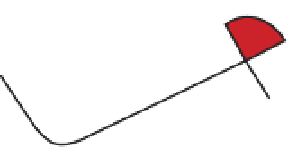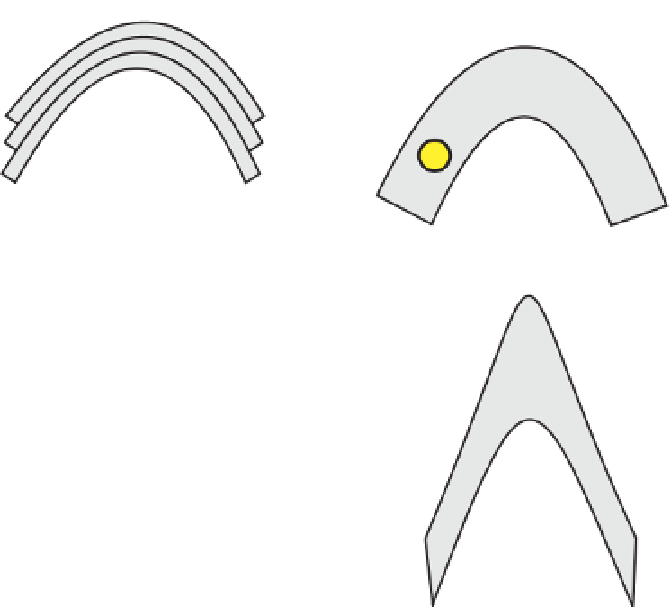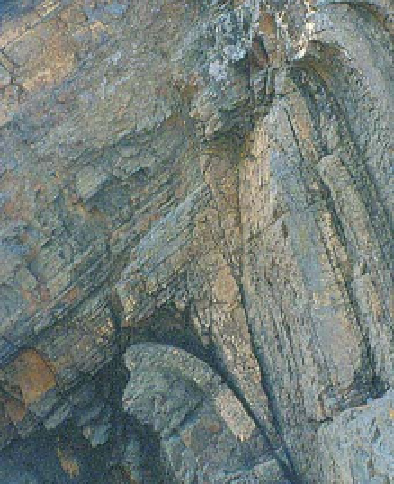Geology Reference
In-Depth Information
it would be seen that the strain had
been achieved by small displacements
caused mostly by sliding between the
rock particles, rather than by deforma-
tion within the grains themselves. These
displacements may be accompanied by
the solution and deposition of vein ma-
terial. Where rock layers are extended on
the outer curves of parallel folds, as in
Figure 6.6B, the extension is achieved by
the opening of extensional cracks - look,
for example, at the cracks in the thick
folded layers in Figure 6.2B; these may
then be filled by vein material such as
quartz or calcite deposited from solu-
tion. Compression on the inner curves
of parallel folds causes material to be
squeezed out or dissolved, and trans-
ferred to the extending areas. Figure
6.6G shows how the buckle folding of
adjacent layers may leave gaps that
may become filled with vein material.
Many folds are associated with faults,
movement on which helps to determine
the final shape of the fold. The fold
shown in Figure 6.7 is a good example
extension
6
no strain
no strain
50
51
compression
A
flexural slip
no strain
B
ideal buckling
dextral
shear
strain
sinistral
shear
strain
C
flexural shear
strained
zone
D
shortening added
to buckling
E
chevron folding
strained
zone
gaps
G
buckling of adjacent layers
F
kinking
Figure 6.6
Strain in folding.
A.
Flexural slip: the fold is produced by thin, relatively unstrained layers
sliding past each other.
B.
Ideal buckling: strain is confined to the hinge, with extension in the outer
arc and compression in the inner.
C.
Flexural shear: the hinge is relatively unstrained but the limbs
experience shear strain.
D.
Layer-parallel shortening applied during or after buckling produces a fold
approaching similar shape.
E.
In chevron folding, the strain is concentrated in the hinges and the
thin, relatively unstrained, layers slide past each other.
F.
Kinking: a kink band is formed by the same
mechanism as chevron folding, but the structure is localised and acts like a reverse fault.
G.
Buckling
of a set of parallel folded layers can be achieved by leaving gaps at the hinges, which are then filled
by vein material.
Figure 6.7
The role of faults in folding. Hinge zone of the Lady anticline, Pembrokeshire,
illustrating how small faults (outlined in white) help to accommodate the strain in the hinge zone.






















































Search WWH ::

Custom Search